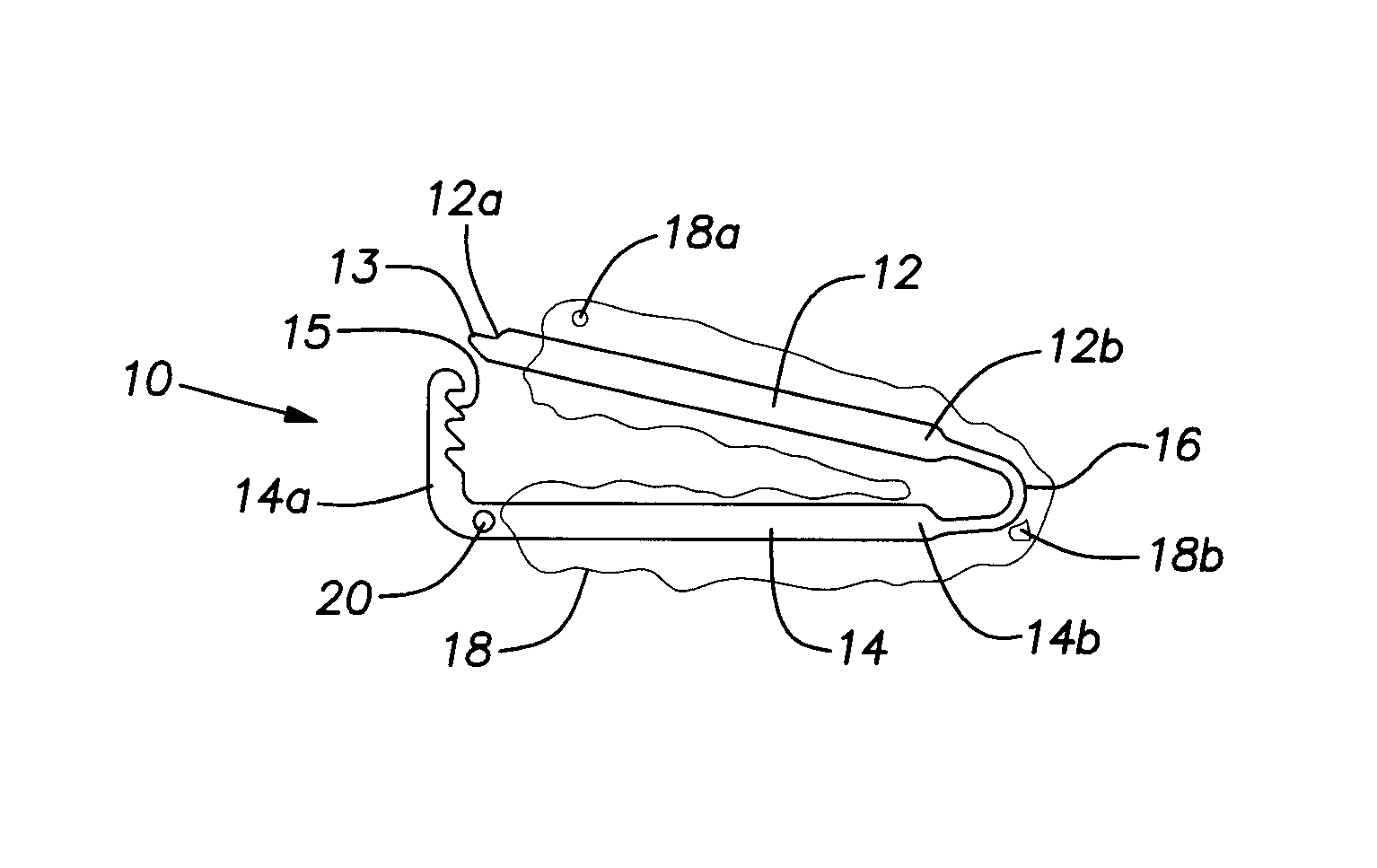Exclusion of the left atrial appendage
a technology of atrial fibrillation and appendage, which is applied in the field of exclusion of the left atrial appendage, can solve the problems of rapid and chaotic heartbeat that produces lower cardiac output, irregular and turbulent blood flow in the vascular system, and the patient with atrial fibrillation typically has a significantly decreased quality of life, so as to achieve quick and easy exclusion of the laa and avoid punctures
- Summary
- Abstract
- Description
- Claims
- Application Information
AI Technical Summary
Benefits of technology
Problems solved by technology
Method used
Image
Examples
Embodiment Construction
[0026]FIG. 1 shows an anterior view of a heart 1. The heart 1 has a right ventricle 5, a left ventricle 4, and a left atrial appendage (LAA) 2. The methods and devices of the present invention involve the placement of an exclusion device over a base region 3 of the LAA 2 to help prevent thrombi or blot clots inside of the LAA 2 from escaping the LAA 2. It is expected that the elimination or containment of thrombi formed within the LAA of patients with atrial fibrillation will significantly reduce the incidence of stroke in these patients.
[0027]Referring to FIGS. 2-7, a device for excluding the LAA 2 according to the invention is indicated generally by the reference numeral 10. The exclusion device 10 includes a first member 12 and a second member 14. The first member 12 has a first end 12a and a second end 12b that lie in a first plane. The second member 14 also has a first end 14a and a second end 14b that lie in the first plane. The first member 12 and second member 14 are adapted...
PUM
 Login to View More
Login to View More Abstract
Description
Claims
Application Information
 Login to View More
Login to View More - R&D
- Intellectual Property
- Life Sciences
- Materials
- Tech Scout
- Unparalleled Data Quality
- Higher Quality Content
- 60% Fewer Hallucinations
Browse by: Latest US Patents, China's latest patents, Technical Efficacy Thesaurus, Application Domain, Technology Topic, Popular Technical Reports.
© 2025 PatSnap. All rights reserved.Legal|Privacy policy|Modern Slavery Act Transparency Statement|Sitemap|About US| Contact US: help@patsnap.com



